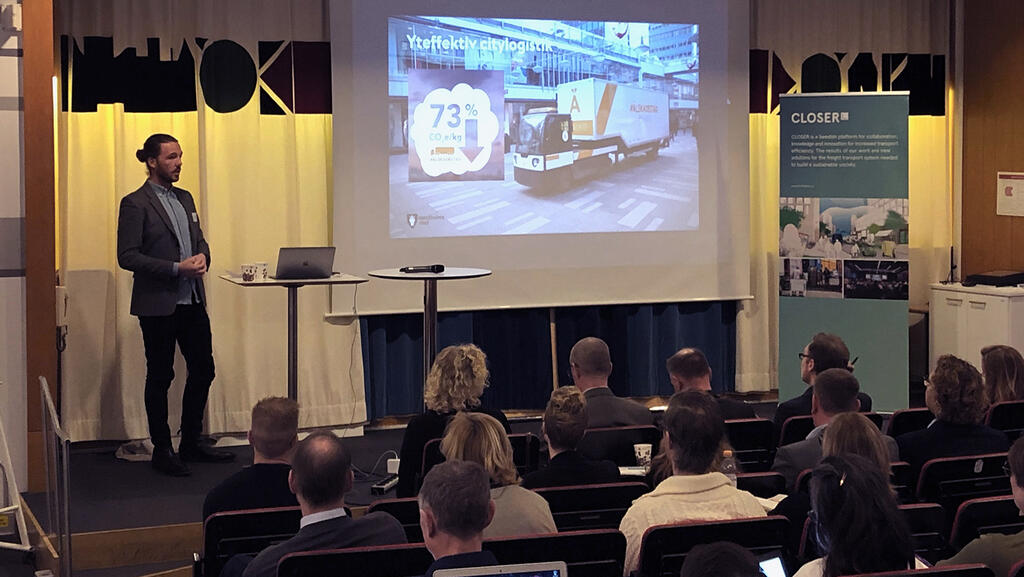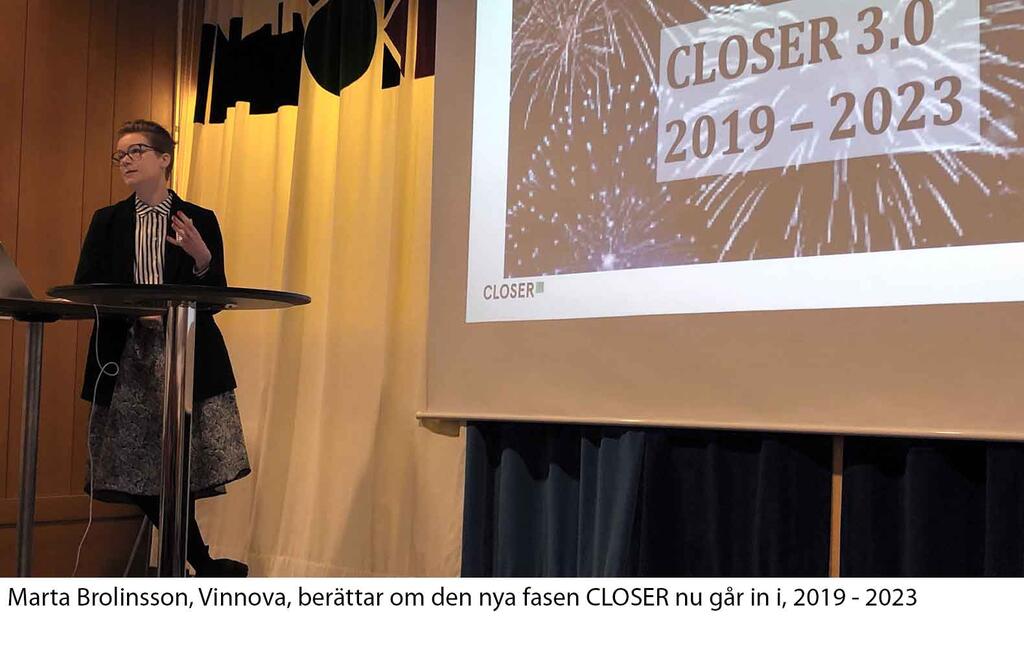Everyone has to think outside of the box and their traditional role
At CLOSER's annual meeting 4 March, when Stockholm City was the host, several keynote speakers gave their perspective on the city's transport and logistics challenges. The headline for speaker topics was changing roles and patterns in trade and effects on the logistics system. The annual meeting was opened by Stockholm City Traffic Commissioner Daniel Helldén. The other speakers represented Vinnova, IKEA, Jernhusen and Royal Swedish Academy of Engineering Sciences (IVA), among others.

CLOSER's annual meeting is an opportunity for all partners and various interested parties to meet and discuss current trends and which questions should be emphasised within the framework of CLOSER and the various subject areas.
'This year, we chose to focus on a topic that ranks high on many people's agenda right now: new business models, roles and challenges like the logistics system are facing a change in commercial patterns taking place in connection with the increase in e-commerce. All of the exciting recordings and follow-up discussions during the annual meeting are proof of the great potential to become even better at collaborating in connection with these issues and improving the level of innovation,' says Lina Moritz, Program Manager at CLOSER.
A seventh speaker was Robin Billsjö, Goods Strategists from Stockholm City, who described how the city intends to create attractive public spaces and simultaneously ensure modern green logistics in a rapidly growing city.
The increasing demands on residential construction in many places entail consequences, particularly in Stockholm where the goal is to build 140,000 new residences by 2030. In combination with changing roles and patterns within commerce, this new development will have major effects, particularly on the logistics system.
Many city planners are struggling with management of an increasingly densely populated city. It is a battle for space. What is most important? What are the challenges?
- Streets, homes, workplaces and green spaces must fit together in a smaller area.
- Greater complexity and increased diversity entail major demands on coordination.
- On their own, there is no interested party that can solve the challenges, such as requirements for better accessibility of traffic.
Collaboration is a given success factor
One of the key success factors for building an attractive and sustainable city is, according to Robin Billsjö, continued collaboration between landowners and building owners, commerce and goods owners, logistics companies, vehicle manufacturers and research institutions.
With short-term and long-term planning, there is a need for a systemic perspective in order to encourage innovative solutions, more effective flow of good and shared loading hubs. At the same time, new playing rules and business models for sharing of transport data are needed.
New freight traffic plan
Since 2018, a new freight traffic plan and a more detailed plan of action have been in place in Stockholm City with six areas of focus, including strategic land use and increased expertise within freight traffic.
'The city does not have all of the answers on its own and must think outside of the box in consideration of its traditional role,' says Robin Billsjö. 'New behaviours and demands on smart logistics solutions force us to take various approaches in parallel and collaborate beyond organisational boundaries.
Stockholm City intends to drive innovation and become a competent policy-maker and legislator. There is a great deal of work left achieve the attractive city.


